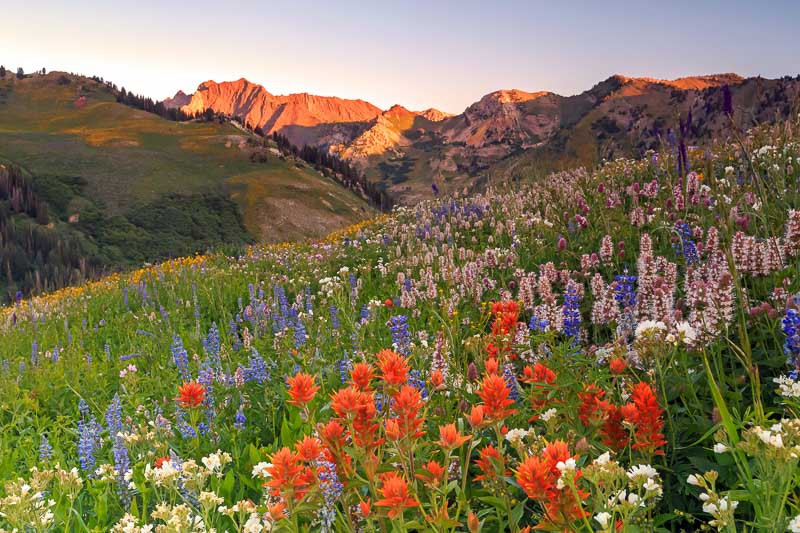Rocky Mountains Native Plants
The Rocky Mountains, with their striking elevation gradients and diverse microclimates, host a variety of native plants that have adapted to thrive in these unique conditions.
- At lower elevations, you’ll find broadleaf forests and grasslands. Native species here include the Ponderosa Pine (Pinus ponderosa), Rocky Mountain Juniper (Juniperus scopulorum), and various grasses like the Bluebunch Wheatgrass (Pseudoroegneria spicata).
- As you ascend, these give way to mixed coniferous forests, with species like the Engelmann Spruce (Picea engelmannii), Subalpine Fir (Abies lasiocarpa), and Quaking Aspen (Populus tremuloides). Understory species such as the Huckleberry (Vaccinium membranaceum) and Heartleaf Arnica (Arnica cordifolia) bloom beautifully in the spring and summer.
- Higher up in the alpine tundra, conditions are harsh with cold temperatures, high winds, and a short growing season. Yet, life persists here. You’ll find delicate wildflowers like Alpine Forget-Me-Not (Myosotis alpestris) and Moss Campion (Silene acaulis) hugging the ground to resist wind. The Whitebark Pine (Pinus albicaulis), a keystone species, also endures these conditions.
- Wetland areas throughout the Rockies support an entirely different set of plants, like the Common Cattail (Typha latifolia) and various willow species (Salix spp.).
These native plants are integral to the Rockies’ ecosystems, providing food and shelter for local wildlife and maintaining soil health. They contribute to the breathtaking beauty of the landscape with their colorful blossoms in spring and summer and their adaptations for survival in these rugged conditions.





